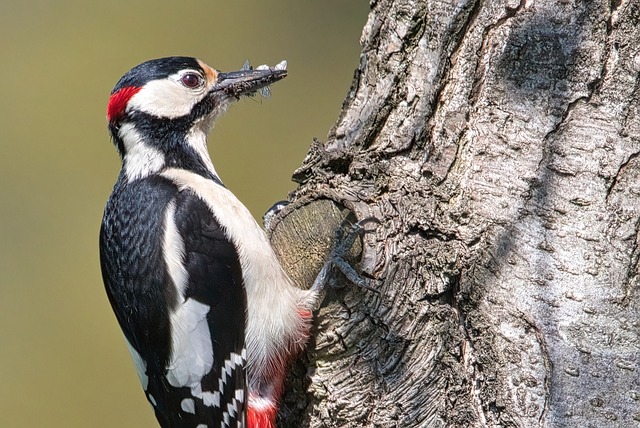Maryland is famous for its abundance of blue crabs, but birdwatchers would be delighted to know that this historical state is also home to 7 species of woodpeckers.
The number may not be as impressive as in other states, but spotting one in the wild makes it more impressive. If one of your goals for this year is to spot all of the species, below is a handy guide to help you through your journey.
What time of year do woodpeckers peck?
Most woodpeckers in Maryland are active throughout the year, but you’ll most likely spot one or two during spring since they’ll be busy looking for a mate or creating a nest for their family. In the winter, some species may prefer to stay locally, but the Northern Flicker and Red-headed woodpecker like to migrate to sunnier locations in the south.
Although woodpeckers prefer to stay in woodland areas, a few species, like the Downy and Hairy woodpeckers, won’t mind visiting your backyard if you have a few seeds laid out. While others prefer to stay near open fields, where bugs and berries are easily accessible.
How do you find a woodpecker in Maryland?
Whether you’re a local woodpecker enthusiast or a seasonal visitor, finding a woodpecker in Maryland won’t be as challenging if you know what you’re looking for. To help you through the process, here are a few signs you’d like to keep in mind:
1. Drilling or pecking noises
Perhaps the most obvious indication that a woodpecker is nearby is through their rhythmic drilling noises on hollow trees.
Larger species will have powerful pecks, while smaller ones will sound softer. Male woodpeckers often drum on trees to declare their territories, attract a mate, or build a nest for their family. If you happen to hear their drilling noises in the wild, be careful not to make any sudden noises so you won’t scare the bird away.
2. Mating calls
Like all birds, woodpeckers have their own distinct mating call depending on the species. So if you’re familiar with how they sound, spotting a woodpecker would be twice as easy since you can quickly distinguish them from other birds.
But if you’re still learning, getting familiar with their sound won’t be challenging considering Maryland only has 7 common species. Following a woodpecker’s mating call will be most effective during the months of March to May since this is how male birds usually initiate their courtship.
3. Holes on trees
Due to their habit of drilling on trees, woodpeckers will usually leave a cluster of horizontal or vertical holes on trees. Aside from announcing their territory and mating rituals, they also tend to drill holes to hunt for insects or grubs.
Wooden and metallic surfaces on buildings aren’t also considered safe from these birds as some like to create shallow holes on wooden or metal sidings, downspouts, chimneys, and gutters. If you spot multiple tiny holes on a surface, there’s a high chance a woodpecker might be nearby.
4. Leaking tree sap
Since it’s not uncommon to see a Yellow-bellied sapsucker around Maryland, leaking tree sap will be a promising clue that they’re close by.
Sapsuckers like to drill ¼-? inch holes in trees, like maple, beech, and elm, to feed on sap by draining them with their tongue. So they’ll usually leave an open well on trunks once they’ve had their fill for the day. If you’re lucky, you might also spot a Hairy woodpecker around a sap well since they like to take the occasional sip by stealing them from other birds!
5. Sloughed tree bark
Since woodpeckers mainly feed on insects, they sometimes like to hunt wood-boring bugs that are hidden between the bark. This method is called sloughing, and woodpeckers use their beak to create an opening and pry off the rest to expose their meal.
Although other animals may also be capable of this behavior, you’ll know it’s done by a woodpecker when trunks and branches have perpendicular marks caused by their beaks.
6. Nesting holes
Once spring hits, woodpeckers of all species will be busy creating their nests on dead trees for mating season. They’ll usually make 1-1.5 inch holes that can reach up to 6-12 inches deep. They’ll also line their nest cavities with wood chips to make them comfortable for their eggs and mate.
But if you want to spot a woodpecker’s nest in the wild, remember to keep a sharp eye because some species, like the Yellow-bellied Sapsucker, like to create their nests high up on the trees – which could reach up to 6,000 feet in the air!
Aside from trees, you can also find woodpecker nests in wooden buildings or utility poles, where they think they won’t be disturbed. Some residents may find this a nuisance, but if they happen to pick your home it would be an excellent opportunity to observe them.







Recent Comments